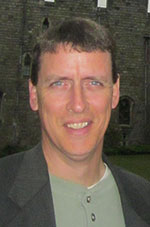September 2015
Scaffold Accountability and Responsibility
 By Zach and Justus Everett
By Zach and Justus Everett
About 20 years ago, I worked for a large scaffold company in a refinery in Beaumont, Texas. I got to know young scaffold builder, Brian. He was one of those guys you couldn’t help but like – always joking around and in a good humor, even when the work was hard. He was young and full of life, and probably would’ve become a supervisor and moved on to bigger and better things.
One day, he climbed up 25 feet up the scaffold and was standing, I believe, on the two-inch scaffold pipes and attempting to set the planks. He lost his balance and fell 25 feet to the ground. The cause of death was blunt force trauma to the head.
We want to identify where the fault was, so we can prevent this from ever happening again. Understanding the different levels of accountability and responsibility, regarding working from scaffolds, will better enable us to avoid the fatalities, like that of Brian.
The four areas of differing accountability and responsibility include scaffold user, scaffold erector, competent person and qualified person. By understanding the definitions of each of these and the related accountability to safety, we can avoid injuries or even fatalities; avoid OSHA citations and fines; and, on the flip side, increase efficiency and productivity.
The scaffold user
The mason or laborer on the scaffold doing the work may not have designed the scaffold or erected the scaffold, but he has responsibilities before and during his working from that scaffold. First, the scaffold user must be trained, so he knows the possible dangers. He must have enough knowledge about scaffolds to recognize when he could be injured. For example: The scaffold must be planted on firm foundation; must be plumb and level, without damaged components; and must have proper access, such as a ladder with the first rung no more than two feet from the ground and reaching at least three feet over the working platform.
The scaffold erector
Scaffold erection is dangerous. Also known as scaffold builders, scaffold erectors are responsible for building and dismantling scaffolds. The competent person trains the erectors in all the things the scaffold user was trained in, plus: how the scaffold goes together and operates; what PPE is needed; and how to avoid the hazards they will be exposed to during the erection process, such as falls.
Harnesses, lanyards, hardhats, gloves, work boots and safety glasses are only samples of the safety equipment that scaffold erectors use daily. This equipment is critical to the safety of the workers.
Competent person
The key role of a competent person is to identify existing and predictable hazards in the surroundings, or identify working conditions that are unsanitary, hazardous or dangerous to employees. He has authorization to take prompt corrective measures to eliminate these conditions.
In short, they are people supervising the safety of the users or erectors of scaffolds. They must inspect the jobsite, materials and scaffold equipment regularly. They must inspect a completed scaffold before each work shift to ensure it is safe for workers. If a competent person does not do his job correctly, in even “little” things it can mean life or death.
Qualified person
A qualified person is an individual who, by possession of a recognized degree, certificate or professional standing, or who by extensive knowledge, training and experience, has successfully demonstrated his ability to solve or resolve problems relating to the subject matter, work, or project. A qualified person’s job is to think around a problem.
Conclusion
So, we have discovered who a scaffold user, scaffold erector, competent person and qualified person are and discussed their responsibilities. And, wouldn’t construction move faster without so many steps and people involved? Isn’t the main goal to build as fast as possible? Yes, the goal is to build. But, we care more for the safety of all those involved. That is our biggest and most important goal: protecting our employees.
Zach Everett is corporate safety director for Brazos Masonry. Justus Everett works under Zach as safety manager. Zach can be reached at zeverett@brazosmasonry.com.
